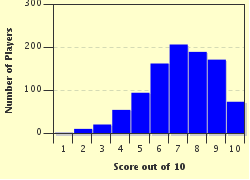Quiz Answer Key and Fun Facts
1. When professional historians speak about the Holocaust what are they referring to?
2. The first permanent Nazi concentration camp opened at Dachau on 22 March 1933 amid considerable publicity. Who, for the most part, were the first inmates?
3. The yellow star that Jews were forced to wear has become a key symbol of the Holocaust. When were German Jews in Germany first forced to wear it in public?
4. In some places Jews were forced to co-operate with the Nazis in their own destruction.
5. From March 1942 onwards newly arrived prisoners at Auschwitz were generally subjected to a 'selection'. What does the term mean in this context?
6. What was a Kapo (or Capo)?
7. Many victims of the Holocaust did not die in camps. How were most of these people killed?
8. Every extermination camp had a 'Sonderkommando' (or 'special unit') composed of able-bodied prisoners. What was the main function of the 'Sonderkommandos'?
9. How were victims generally taken to extermination camps and concentration camps?
10. Who liberated Auschwitz?
Source: Author
bloomsby
This quiz was reviewed by FunTrivia editor
Exit10 before going online.
Any errors found in FunTrivia content are routinely corrected through our feedback system.

